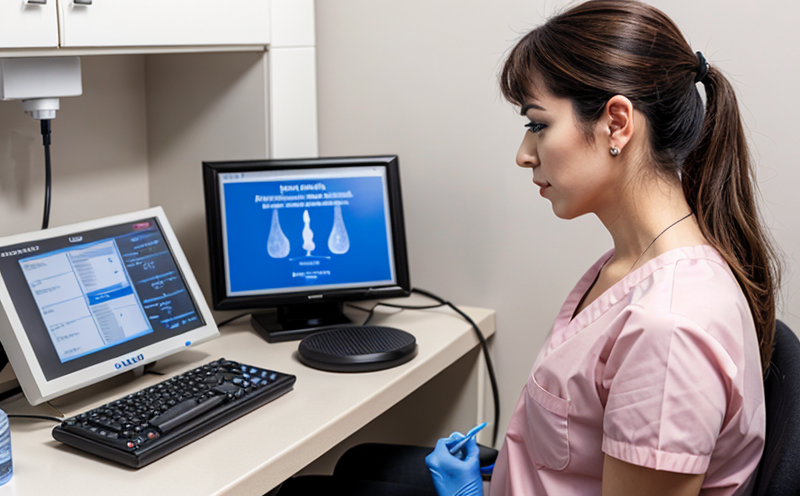Endocrine Biomarker Testing in Fish Toxicology
The Endocrine System is a critical regulatory network responsible for maintaining homeostasis and ensuring proper physiological function. In aquatic environments, particularly within fish species, endocrine disruption can have profound implications on individual health and ecosystem stability. The field of Endocrine Biomarker Testing in Fish Toxicology focuses on identifying the presence and effects of exogenous compounds that may alter natural hormone levels. This service is essential for regulatory compliance, environmental monitoring, and understanding the potential impacts of pollutants or contaminants.
The testing process involves multiple steps to ensure accurate and reliable results. Firstly, appropriate samples are collected from fish populations under study. Specimen preparation requires precise handling techniques to avoid contamination and preserve biomarker integrity. Next, laboratory analysis employs sensitive instrumentation such as mass spectrometry and ELISA (Enzyme-Linked Immunosorbent Assay) for quantification of key hormones or metabolites.
Compliance with international standards like ISO 17025 ensures that our methods meet rigorous quality assurance criteria. This service supports various stakeholders including regulatory bodies, environmental agencies, academic institutions, and private sector companies involved in water quality assessment and pollution control efforts.
The scope of this testing includes identifying specific biomarkers indicative of endocrine disruption such as thyroid hormones (T3/T4), sex steroids (estradiol-17β, testosterone), growth factors (IGF-1), and stress-related indicators like cortisol. By detecting these markers at elevated or reduced levels compared to baseline conditions, it becomes possible to assess the health status of exposed organisms.
The methodology employed follows established protocols outlined in relevant literature and guidelines from organizations such as EPA (Environmental Protection Agency) and OECD (Organisation for Economic Co-operation and Development). These procedures ensure consistency across studies while allowing flexibility based on project requirements. For instance, when evaluating long-term exposure scenarios, repeated sampling over extended periods allows tracking of hormonally active substances' temporal patterns.
One advantage of this service lies in its ability to detect subtle changes that might otherwise go unnoticed using traditional toxicity tests alone. Early detection enables proactive measures aimed at mitigating harmful effects on aquatic life before they become widespread issues. Additionally, by providing comprehensive data regarding specific biomarkers affected by contaminants, decision-makers can prioritize interventions targeting the most vulnerable species or habitats.
Another benefit is its role in supporting research efforts focused on understanding mechanisms underlying endocrine disruption. Insights gained from these analyses contribute to developing more effective strategies for preventing future incidents and restoring damaged ecosystems once recovery initiatives have been implemented.
Scope and Methodology
The scope of Endocrine Biomarker Testing in Fish Toxicology encompasses several aspects crucial for accurate assessment. Primarily, we examine hormone levels indicative of endocrine disruption within fish populations exposed to various environmental stressors. This includes identifying potential sources of contamination through targeted sampling campaigns designed specifically for the study site.
The methodology involves multiple stages starting with sample collection which must adhere strictly to predefined protocols ensuring minimal disturbance to the ecosystem while maximizing representation. Specimens are analyzed using advanced analytical techniques capable of detecting even trace amounts of biomarkers relevant to endocrine health. Results obtained from this process form the basis for interpreting findings and deriving actionable insights.
| Biomarker | Target Species | Sample Type | Methodology |
|---|---|---|---|
| Hormones (T3/T4) | Salmonids, Perciformes | Whole blood | ELISA |
| Sex Steroids (Estradiol-17β) | Oncorhynchus species | Liver tissue | GC-MS |
| Growth Factors (IGF-1) | Lates calcarifer, Clarias gariepinus | Fins and gills | LC-MS/MS |
| Cortisol | Oreochromis niloticus | Skin mucus | HPLC |
The choice of biomarker depends on the objectives set forth by clients or regulatory authorities involved in the project. For instance, if assessing chronic stress responses, cortisol levels would be prioritized; whereas evaluating reproductive success might necessitate examining sex steroid concentrations.
Once collected, samples undergo rigorous quality control checks before being processed further depending upon the chosen methodological approach. This ensures that all analytical processes follow best practices outlined in established guidelines ensuring high-quality outcomes throughout every stage of the testing procedure.
Benefits
- Precise identification and quantification of endocrine-disrupting compounds in aquatic environments.
- Supports regulatory compliance by providing robust scientific evidence for environmental impact assessments.
- Aids in early detection of hormonally active substances, enabling timely intervention strategies to protect biodiversity.
- Enhances understanding of mechanisms underlying endocrine disruption, contributing valuable information towards developing sustainable solutions.
This service offers numerous advantages beyond mere compliance requirements. It plays a vital role in safeguarding aquatic ecosystems from harmful pollutants while promoting responsible stewardship practices among industrial operators and governmental agencies alike.
Use Cases and Application Examples
- Evaluating the impact of urban runoff on local fish populations.
- Determining whether agricultural pesticides affect hormone balance in freshwater species.
- Investigating how industrial discharge influences sex determination processes in certain species.
- Assessing recovery potential after remediation efforts have been implemented following accidental spills.
| Case Study | Biomarker Targeted | Main Findings | Implications |
|---|---|---|---|
| Runoff Impact on Salmonids | Hormones (T3/T4) | Elevated T3 levels observed in exposed individuals. | Indicates stress response to increased pollutant load; potential reproductive impairment noted. |
| Pesticide Effect on Carp | Sex Steroids (Estradiol-17β) | Reduced estradiol levels detected in treated group. | Implication for sex determination and subsequent population dynamics explored. |
| Industrial Spill Cleanup | Growth Factors (IGF-1) | Increased IGF-1 observed post-cleanup, suggesting recovery. | Positive signs of ecosystem resilience highlighted. |
In each case study presented above, careful consideration was given to selecting appropriate biomarkers reflecting the particular concern at hand. For example, during investigations into urban runoff impacts on salmonids, thyroid hormones were selected because they are known indicators of stress and reduced reproductive success in these species.





